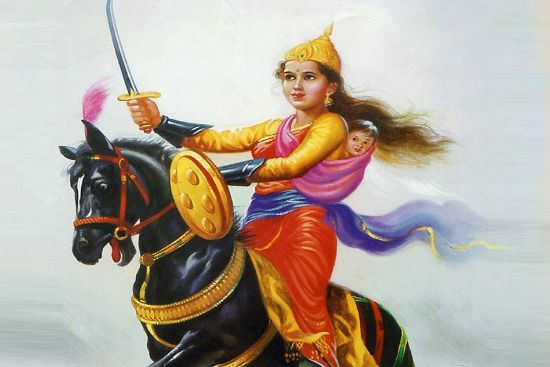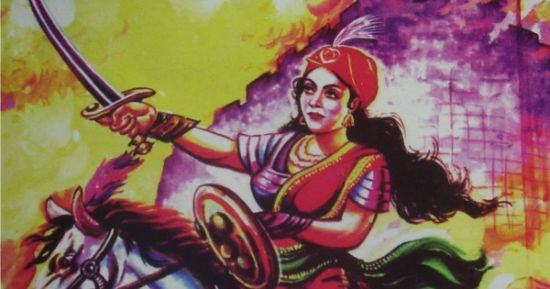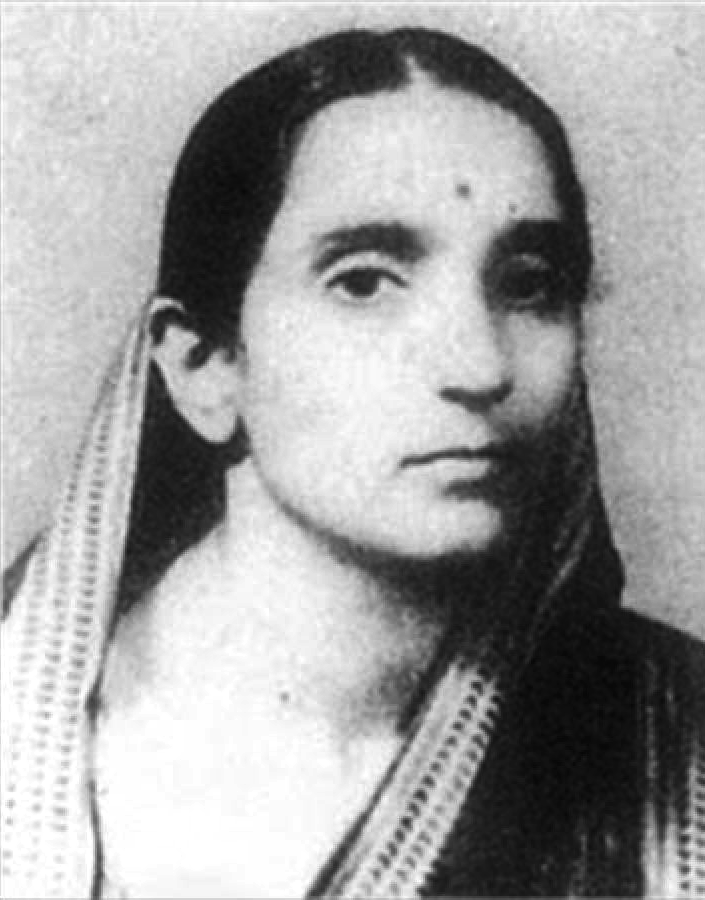| Role of Women in Freedom Struggle |
| Name |
Contribution in Freedom Struggle |
|
Rani Laxmibai
|
- The queen of the princely state of Jhansi, Rani Laxmibai is known for her role in the First War of India’s Independence in 1857.
- Born Manikarnika Tambe in 1835, she married the king of Jhansi.
- The couple adopted Damodar Rao as her son before the king’s death, which the British East India Company refused to accept as the legal heir in accordance with the Doctrine of lapse and decided to annex Jhansi.
- The Doctrine of Lapse was an annexation policy followed widely by Lord Dalhousie when he was India's Governor-General from 1848 to 1856.
- Refusing to cede her territory, the queen decided to rule on behalf of the heir and later joined the uprising against the British in 1857.
- Under General Hugh Rose, the East India Company’s forces had begun their counteroffensive in Bundelkhand by January 1858.
- She single-handedly fought with the British, riding on a horse, tying Damodar Rao behind her back.
- She conquered the fort of Gwalior with the help of Tatya Tope and Nana Saheb.
- Cornered by the British, she escaped from Jhansi fort. She was wounded in combat near Gwalior’s Phool Bagh, where she later died.
|
|
Jhalkari Bai
|
- A soldier in Rani Laxmibai’s women’s army, Durga Dal, rose to become one of the queen’s most trusted advisers.
- She is known for putting her own life at risk to keep the queen out of harm’s way.
- Till date, the story of her valor is recalled by the people of Bundelkhand, and she is often presented as a representative of Bundeli identity.
- Many Dalit communities of the region look up to her as an incarnation of God and also celebrate Jhalkaribai Jayanti every year in her honour.
|
|
Durga Bhabhi
|
- Durgawati Devi, who was popularly known as Durga Bhabhi, was a revolutionary who joined the armed struggle against colonial rule.
- A member of the Naujawan Bharat Sabha, she helped Bhagat Singh escape in disguise from Lahore after the 1928 killing of British police officer John P Saunders.
- During the train journey that followed, Durgawati and Bhagat Singh posed as a couple and Rajguru as their servant.
- Later, as revenge for the hanging of Bhagat Singh, Rajguru, and Sukhdev, she made an unsuccessful attempt to kill the former Punjab Governor, Lord Hailey.
- Born in Allahabad in 1907 and married to Hindustan Socialist Republican Association (HSRA) member Bhagwati Charan Vohra, Durgawati, along with other revolutionaries, also ran a bomb factory in Delhi.
|
|
Rani Gaidinliu
|
- Born in 1915 in present-day Manipur, Rani Gaidinliu was a Naga spiritual and political leader who fought the British.
- She joined the Heraka religious movement which later became a movement to drive out the British.
- She rebelled against the Empire and refused to pay taxes, asking people to do the same.
- The British launched a manhunt, but she evaded arrest, moving from village to village.
- Gaidinliu was finally arrested in 1932 when she was just 16 and later sentenced for life.
- She was released in 1947.
- Prime Minister Jawaharlal Nehru described Gaidinliu as the “daughter of the hills”, and gave her the title of ‘Rani’ for her courage.
|
|
Begum Hazrat Mahal
|
- After her husband, Nawab of Awadh Wajid Ali Shah was exiled after the 1857 revolt, Begum Hazrat Mahal, along with her supporters, took on the British and wrested control of Lucknow. She was forced into a retreat after the colonial rulers recaptured the area.
|
|
Velu Nachiyar
|
- Many years before the revolt of 1857, Velu Nachiyar waged a war against the British and emerged victorious.
- Born in Ramanathapuram in 1780, she was married to the king of Sivagangai.
- After her husband was killed in battle with the East India Company, she entered the conflict, and won with support of neighbouring kings.
- She went on to produce the first human bomb as well as establish the first army of trained women soldiers in the late 1700s.
- Her army commander Kuyili is believed to have set herself ablaze and walked into a British ammunition dump.
|






